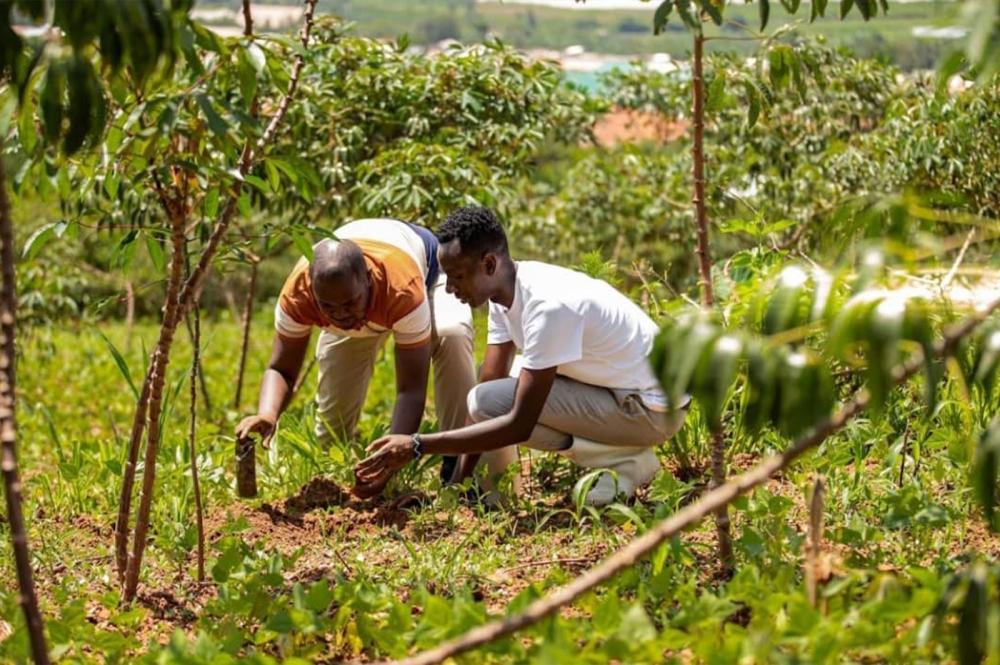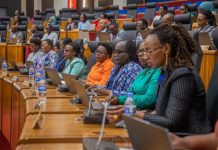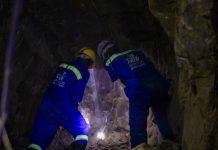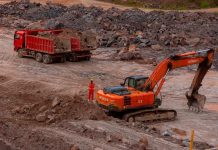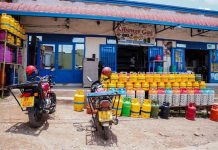Africa-Press – Rwanda. As survival rates of planted forests raise concern, scientists and ICT experts in Rwanda are developing digital systems to track forest growth, detect threats, and ensure long-term sustainability.
A recent study found that trees planted under agroforestry schemes in Rwanda have an average survival rate of about 64 percent, with some sites recording rates as low as 30 percent due to limited follow-up and monitoring.
A digital file for every tree
Amudala Museme is part of the team that has developed the Ecoforest Climate Tech Platform, adigital monitoring, reporting, and verification (dMRV) tool that connects tree-planting and afforestation initiatives with real-time tracking, particularly benefiting smallholder farmers, a digital monitoring, reporting, and verification (dMRV) tool that connects tree-planting and afforestation initiatives with real-time tracking, particularly benefiting smallholder farmers.
“The platform functions like a digital file for every tree,” Museme explained. “It tracks how many trees are alive, how they are growing, and where replacements are needed. It monitors and monetises climate-smart trees with digital evidence of impact.”
After planting, each tree or plot is registered with GPS coordinates, farmer details, and species information. Field agents, dubbed Green Agents use mobile tools to collect periodic updates through an app and USSD code, tracking tree growth, survival, and health.
The system integrates satellite data, weather patterns, and analytics to detect disease, pests, or drought stress over time. Smallholder farmers using feature phones can access the platform through the Igiti App or USSD, while organisations view results via online dashboards and reports.
Museme said many reforestation projects suffer from poor monitoring, leading to tree loss and unreliable data. “One report noted that up to 50 percent of planted trees may fail without proper follow-up. Planting a tree is one thing; ensuring it survives and sequesters carbon long-term is another,” he said.
By providing real-time, traceable data, the platform enhances accountability, attracts investors, and improves survival rates through early problem detection.
National efforts to strengthen forest monitoring
According to the Rwanda Forestry Authority (RFA), between 2009 and 2019, approximately 105,713 hectares were deforested while 139,674 hectares were newly planted, a net forest cover gain of about 5 percent over the decade.
However, RFA officials and researchers warn that weak monitoring systems continue to undermine forest management. A study led by Jean Nduwamungu (University of Rwanda) and Athanase Mukuralinda (CIFOR) found that many public forests face threats such as illegal harvesting, over-cutting, and low productivity due to poor oversight and heavy reliance on fuelwood.
“There should be sufficient monitoring to prevent inefficiencies. Management of planted forests remains poor,” said MP Jean René Niyorurema, urging better follow-up after planting.
Appearing before Parliament’s Committee on Land, Agriculture, Livestock and Environment on October 30, Concorde Nsengumuremyi, Director General of RFA, said a new forest monitoring and evaluation system and forest master plan are under development.
“The system will detect carbon storage and tree species. We must collaborate with space agencies and developers,” Nsengumuremyi noted.
Rwanda aims to plant 300 million trees by 2029, including 70 percent under agroforestry. About 72 million trees are planned for the current planting season alone.
Tracking the carbon market
In parallel, Rwanda is setting up a carbon market project registry to track emission reductions and carbon credits, according to Juliet Kabera, Director General of the Rwanda Environment Management Authority (REMA).
The registry will record mitigation outcomes and transactions under both voluntary markets and Article 6 of the Paris Agreement. It aligns with the Standardised Crediting Framework (SCF), which defines how emission reductions are measured and verified.
“The carbon registry promotes transparency and simplifies tracking of Rwanda’s carbon market performance,” Kabera said.
As Rwanda scales up digital monitoring in forestry and carbon projects, innovators like Museme see an opportunity to merge conservation with technology, ensuring that every tree planted is counted, nurtured, and sustained.
For More News And Analysis About Rwanda Follow Africa-Press

